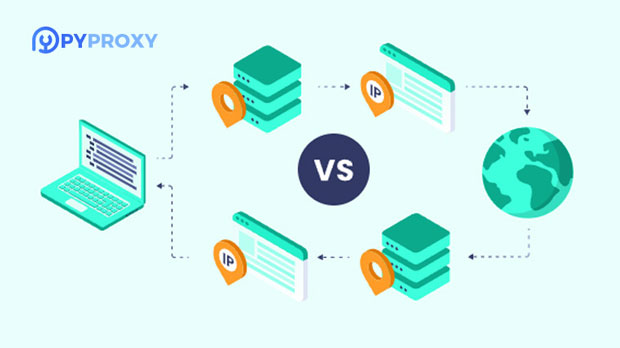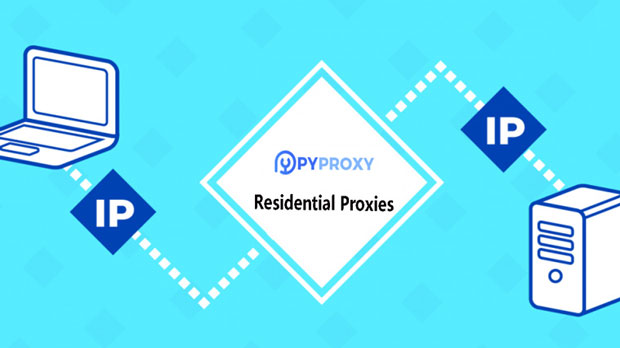In modern networks, latency is a key concern that can affect the performance of applications and services, especially in wireless proxy networks. Reverse proxy servers, which act as intermediaries between clients and backend servers, have been hailed as a potential solution for reducing latency. But does using a reverse proxy effectively reduce latency in wireless proxy networks? This article delves into the concept of reverse proxies, their role in optimizing network performance, and how they can impact latency in wireless networks. We will analyze the factors that influence latency, explore the benefits of reverse proxies, and evaluate their effectiveness in wireless proxy networks. Understanding Reverse Proxy Servers and LatencyBefore diving into whether reverse proxies can reduce latency, it is essential to understand what a reverse proxy is and how latency impacts wireless networks. A reverse proxy server is positioned between the client (user) and the backend servers, forwarding client requests to the appropriate server and delivering the server's response back to the client. Unlike a forward proxy, which typically acts on behalf of the client to access services, a reverse proxy protects backend servers from direct exposure to the internet.Latency, on the other hand, is the delay or lag experienced in transmitting data across the network. In wireless networks, latency can be more pronounced due to factors like signal interference, congestion, and long transmission distances. High latency can lead to slow data transfer rates, poor user experience, and reduced performance for applications that require real-time interactions, such as gaming, video streaming, or VoIP (Voice over Internet Protocol) services.The Role of Reverse Proxy in Optimizing Network PerformanceReverse proxies play a crucial role in optimizing network performance in various ways. They are primarily used for load balancing, improving security, and caching. Here’s how they function:1. Load Balancing: Reverse proxies can distribute client requests across multiple backend servers. This ensures that no single server is overwhelmed with traffic, thereby improving server performance and reducing response times. When the load is balanced efficiently, the overall system experiences reduced latency, as the client’s request is handled by the least-loaded server, minimizing delays.2. Caching: Reverse proxies can cache frequently accessed content on behalf of backend servers. When a client requests cached data, the reverse proxy can serve the content without involving the backend server. This significantly reduces response times, as it eliminates the need to retrieve data from the server for every request. In wireless networks, where the transmission path can introduce delays, caching can effectively reduce latency for repeated content requests.3. SSL Termination: Reverse proxies can handle SSL encryption and decryption on behalf of the backend servers. This process, known as SSL termination, offloads the encryption burden from the backend servers, allowing them to focus on processing the actual application logic. By reducing the processing time for secure connections, reverse proxies can lower latency, particularly in wireless environments where the overhead of encrypting and decrypting data can add significant delay.How Reverse Proxy Reduces Latency in Wireless NetworksNow, let’s explore how reverse proxies can specifically impact latency in wireless proxy networks. Wireless networks are prone to higher latency due to several challenges such as signal degradation, congestion, and interference. By acting as an intermediary between clients and backend servers, reverse proxies can alleviate some of these challenges and improve network performance.1. Reducing Network Congestion: In wireless networks, congestion occurs when multiple devices are competing for bandwidth, leading to increased latency. A reverse proxy can mitigate congestion by efficiently distributing traffic, ensuring that backend servers are not overwhelmed. By serving as a traffic controller, it can prioritize requests, minimize delays, and optimize the available bandwidth, which in turn lowers latency.2. Optimizing Routing: Wireless networks often suffer from inefficient routing due to the dynamic nature of wireless channels and the distance between clients and servers. Reverse proxies can help optimize routing by selecting the best route for each request. For instance, they can route traffic through the fastest available server or data center, minimizing the time it takes for data to travel between the client and the backend server, thus reducing latency.3. Local Caching and Content Delivery: Wireless proxy networks often rely on content delivery networks (CDNs) to distribute content efficiently. Reverse proxies can act as a caching layer within these CDNs, storing copies of content closer to the end-user. By serving content from a nearby proxy server, reverse proxies reduce the time required to fetch data from distant servers, effectively lowering latency and improving user experience in wireless environments.4. Handling High Volume of Requests: Wireless networks often experience high traffic volumes, particularly in crowded areas or during peak times. Reverse proxies help in managing large volumes of requests by routing them to the most appropriate servers. By preventing any one server from being overwhelmed, reverse proxies ensure that client requests are handled swiftly, reducing delays and improving the overall latency in wireless proxy networks.Challenges and Limitations of Using Reverse Proxy for Latency ReductionWhile reverse proxies can significantly reduce latency in wireless proxy networks, there are some challenges and limitations to consider.1. Overhead of Proxy Server: Introducing a reverse proxy into the network can introduce its own set of overheads. The proxy must process each request and response, which can add latency if not properly optimized. If the reverse proxy is not adequately configured or is overwhelmed with too much traffic, it could potentially become a bottleneck, negating the benefits of reduced latency.2. Complexity in Network Configuration: Deploying reverse proxies in wireless networks requires careful configuration and monitoring. Improper setup or misconfiguration could lead to additional delays instead of reducing them. For instance, if the reverse proxy is located far from the client, the initial request still experiences high latency due to the long distance.3. Limited Impact on Radio Signal Interference: Reverse proxies can optimize routing and reduce congestion, but they cannot mitigate the physical challenges of wireless communication, such as signal interference or weak signal strength. In areas with poor wireless coverage, no matter how optimized the proxy server is, the inherent limitations of the wireless connection could still lead to high latency.Conclusion: Is Reverse Proxy the Solution for Wireless Latency?In conclusion, reverse proxies can indeed play a significant role in reducing latency in wireless proxy networks, especially in terms of load balancing, caching, and SSL termination. They help optimize network traffic, minimize congestion, and ensure efficient routing, all of which can contribute to lower latency. However, while reverse proxies offer significant advantages, they cannot completely eliminate the challenges posed by wireless networks, such as signal interference or congestion from physical factors.For organizations looking to reduce latency in wireless proxy networks, employing a reverse proxy server can be a highly effective solution when combined with other strategies like optimizing the wireless infrastructure, enhancing signal strength, and using content delivery networks. However, it is essential to understand that reverse proxies, while beneficial, should be part of a broader strategy for improving network performance.
Sep 22, 2025


































































